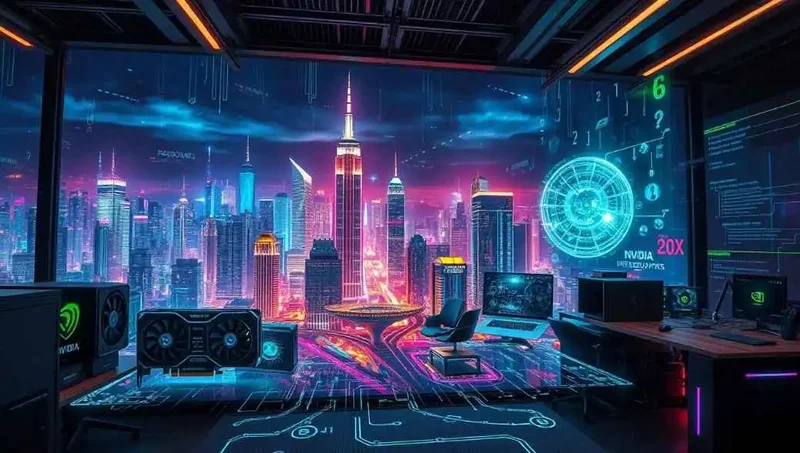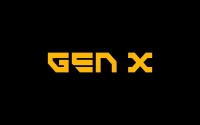We’ve all seen the headlines. Nvidia’s stock soars, the Nasdaq hits a new high, the market cap blows past a mind-boggling $5 trillion. Wall Street traders, their faces illuminated by the green and red glow of terminals, fret over the Federal Reserve’s every word, parsing Jerome Powell’s statements about a quarter-point rate cut like ancient priests reading omens in the sky.
But I’m telling you, they’re looking at the wrong signals.
While the world was distracted by the daily churn of indices and interest rates, something far more profound was announced. Something that isn’t just about the next quarter’s earnings, but about the next century’s foundation. It’s a collaboration between Nvidia and Samsung, a partnership that’s been quietly building for 25 years, that has just laid the cornerstone for what I can only describe as the next industrial revolution. They’re calling it an "AI Factory" (NVIDIA and Samsung Build AI Factory to Transform Global Intelligent Manufacturing). And it’s so much more than a factory.
The Dream of the Self-Building Machine
Imagine a factory that doesn’t just assemble products, but actively learns, predicts, and improves itself in real time. That’s the core idea here. Samsung, one of the world’s most advanced manufacturers, is building a new semiconductor plant powered by more than 50,000 of Nvidia’s most powerful GPUs. But these chips aren’t just running the front office computers; they’re being woven into the very fabric of the manufacturing process itself.
They’re creating a "digital twin"—in simpler terms, a perfect, physically accurate virtual simulation of the entire factory running in Nvidia’s Omniverse platform. This isn't just a fancy 3D model. It’s a living, breathing data environment where they can test a new production line before a single screw is turned, predict when a machine will fail weeks in advance, and optimize workflows with an intelligence no human team could ever match. When I first read the details of this, I honestly just sat back in my chair, speechless. This is the kind of breakthrough that reminds me why I got into this field in the first place.
This is the ultimate feedback loop. They are using AI to design and manufacture the very chips that will power the next generation of AI. Think about that for a second. It's like using the first steam engine not just to power a loom, but to forge the steel for a far more efficient and powerful steam engine. It’s a recursive, self-accelerating cycle of innovation. The speed of this is just staggering—it means the gap between today’s technology and tomorrow’s is closing faster than we can even comprehend, creating an exponential curve that’s finally becoming visible to the naked eye.

What does this mean for us? It means better, faster, and more powerful technology in everything from our phones to our cars. But more importantly, what could it mean for you? What problems could you solve if the tools you used to build were themselves intelligent?
A Blueprint for a Sovereign Future
This isn't happening in a vacuum. The Samsung AI Factory is the centerpiece of a much larger movement. Nvidia just announced it’s supplying as many as 260,000 AI chips to South Korea, boosting the nation’s total to over 300,000. This is part of a global push for what’s being called "Sovereign AI"—nations building their own domestic AI infrastructure to ensure they aren’t left behind.
Companies like Hyundai and SK Group are building their own AI factories. NAVER Cloud, Korea’s AWS equivalent, is massively expanding its GPU capacity. This isn’t just about national pride or economic competition. It’s a fundamental recognition that the ability to harness artificial intelligence is becoming as critical to a nation's future as electricity or the internet was in the 20th century.
It’s the modern-day equivalent of the printing press. When Gutenberg invented his press, he didn’t just create a new way to make books; he decentralized the power of information, sparking the Renaissance and the Reformation. Similarly, by creating the tools for AI-driven manufacturing and distributing them globally, we are empowering nations and industries to build their own futures, tailored to their own unique cultures and needs.
Of course, this kind of power comes with immense responsibility. We have to ask ourselves the hard questions. How do we ensure these powerful tools are used to uplift humanity, to solve our grandest challenges like climate change and disease, rather than just to create a bigger bottom line? The blueprint is being drawn right now, and we all have a stake in making sure it’s a design for a better world.
The market sees over $500 billion in demand for Nvidia’s next-generation chips (Nvidia Signals $500B AI Chip Boom — Analysts See Big Upside Ahead). Analysts see dollar signs and earnings per share. I see something different. I see the raw material for hundreds, maybe thousands, of these AI-driven ecosystems springing up across the globe, each one a unique engine of progress.
We're Building the Future's Architect
Forget the fractional dips in the Dow. Ignore the noise about December rate cuts. The real story is this: we have officially entered an era where our machines are becoming our partners in creation. The AI Factory isn't just making chips; it's the first draft of an intelligent system designed to accelerate its own evolution. We are no longer just the users of technology. We are becoming the architects of the architects. The cycle has begun, and it will change everything.









